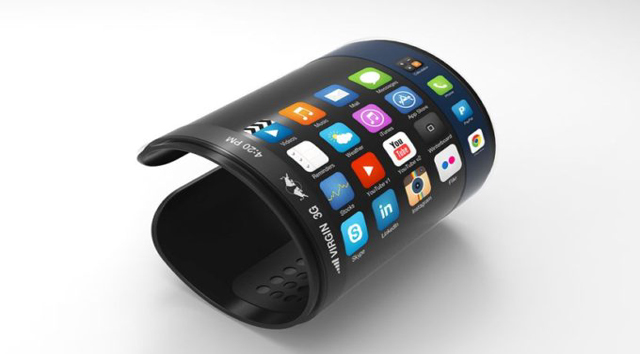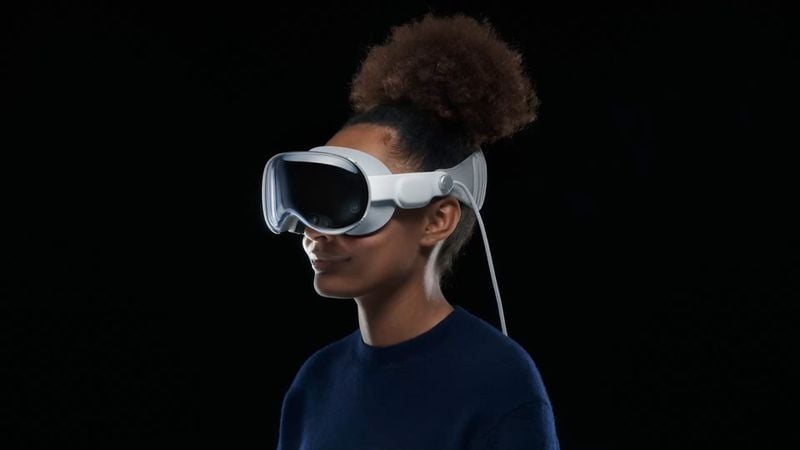The Future of Smartphones: Foldables, AR, and Beyond
Smartphones have become an essential part of our lives, but have we reached peak innovation? Learn about the latest trends in the smartphone industry, including foldable phones, AR, and more.

Since the launch of the first smartphone in 1993, mobile technology has evolved rapidly. Smartphones have become an essential part of our lives, and we use them for everything from staying connected with friends and family to working and shopping.
Thirty years later, smartphones have reached a point where nothing is left to innovate, and an average consumer will not buy the same mobile phone with a slightly better chip and a better camera. The industry giants are aware of this and are trying different things to keep this market alive. Some are focusing on making better foldable phones, and some are entering the AR market, so let’s look into what the future holds for this industry.
Struggle to Innovate
Companies like Apple and Samsung know that an average consumer like me doesn’t care about how fast their new chipset is or how the new phone is lighter than last year’s. That’s why they have tested different things like foldable phones and AR glasses.
Apple
The only significant difference between the iPhone 14 and the iPhone 15 is that the iPhone 15 has the all-new A17 Bionic chip that is expected to be faster than the iPhone 14s A15 Bionic chip, and the iPhone 15 has a 48MP primary camera, which is a significant upgrade over the 12MP primary camera in the iPhone 14. But as an average consumer, do you care about a faster chipset? I don’t think the majority do, and Apple also knows that that’s why they are entering the AR/VR market with their Apple Vision Pro.
Samsung
The Same goes for Samsung; the only difference between the S22 and the S23 is that the S23 has the Snapdragon 8 Gen 2 chip, which is slightly faster and more efficient than the Snapdragon 8 Gen 1 chip in the Samsung Galaxy S22. The Samsung Galaxy S23 has a slightly upgraded camera system. The telephoto camera now has 3x optical zoom, up from 2x optical zoom on the Samsung Galaxy S22. The front-facing camera has also been upgraded to 12MP, up from 10MP on the Samsung Galaxy S22. Other than this, the only other significant upgrade was the price tag. The s23 is 100$ more expensive than the s22. And again, the average consumer doesn’t buy the same phone with an increased price tag for a slight performance boost.
Pixel
Lastly, if you look at the Google Pixel, the Pixel 8 has the Google Tensor G3 chip, which is expected to be faster and more efficient than the Google Tensor G2 chip in the Pixel 7. Another significant upgrade is that The Pixel 8 has a telephoto camera, which the Pixel 7 does not. And these 2 upgrades will cost you 100 dollars more. That is why Google is working on incorporating AI into their device to attract more people.
Predictable Future
So, we have discussed the current state of the market. Let’s take a look into what the future holds for the industry.
Foldable Phones

Foldable Phones
I think traditional smartphones are not going anywhere, but they will not stay as popular as they are. With the rise of Foldable phones, many people have started to see the benefits of foldable phones. Foldable phones are better than your traditional phones in many ways. For example, the phones have a larger screen, can be used as a tablet, and can also fit in your pocket.
While foldable phones offer several advantages over traditional smartphones, they are still in their early stages of development. As a result, they are more expensive than traditional smartphones and may not have all of their features and functionality.
Despite these challenges, foldable phones are becoming increasingly popular. Many people believe that foldable phones will eventually replace traditional smartphones. Others believe foldable phones will exist alongside traditional smartphones, each serving a different purpose.
AR Headset/Glasses

Apple Vision Pro
Augmented reality (AR) glasses and headsets are another emerging technology that has the potential to reshape the way we use our smartphones. AR glasses and headsets overlay digital information onto the real world, which can be used for various purposes. AR glasses provide turn-by-turn navigation; you don’t have to keep looking at your screen to check directions. Another benefit of AR glasses is that you can get live information about the things around you; for example, if you are looking at a historical site, the glasses will recognize it and give info about the site. AR glasses and headsets can also be used to play games, watch videos, and listen to music.
AR glasses and headsets are still in their early stages of development, but they can potentially revolutionize how we use our smartphones.
Companies reshaping this industry
Humane is a technology company founded in 2021 by former Google executives. The company is developing a new type of mobile phone that is more sustainable, ethical, and user-friendly.

Image Credits: Luca Tombolini for Coperni
Humane is still in the early stages of development, but the company has already raised over $100 million in funding from top investors, including Andreessen Horowitz and Sequoia Capital.
Humane is just one of several companies working to reshape the mobile industry more humanely and sustainably.
Final Word
The smartphone industry is at a crossroads. Traditional smartphones are becoming increasingly stagnant, and consumers are no longer excited about incremental upgrades. As a result, industry giants like Apple and Samsung are focusing on new technologies such as foldable phones and AR glasses.
Foldable phones offer several advantages over traditional smartphones, such as a larger screen and more versatility. However, they are still in their early stages of development and can be expensive. AR glasses and headsets have the potential to revolutionize the way we use our smartphones, but they are also in their early stages of development.
It is too early to say what the future holds for the smartphone industry, but it is clear that change is coming. Companies like Humane are working to reshape the industry more humanely and sustainably. It will be interesting to see how the smartphone industry evolves in the coming years.


















